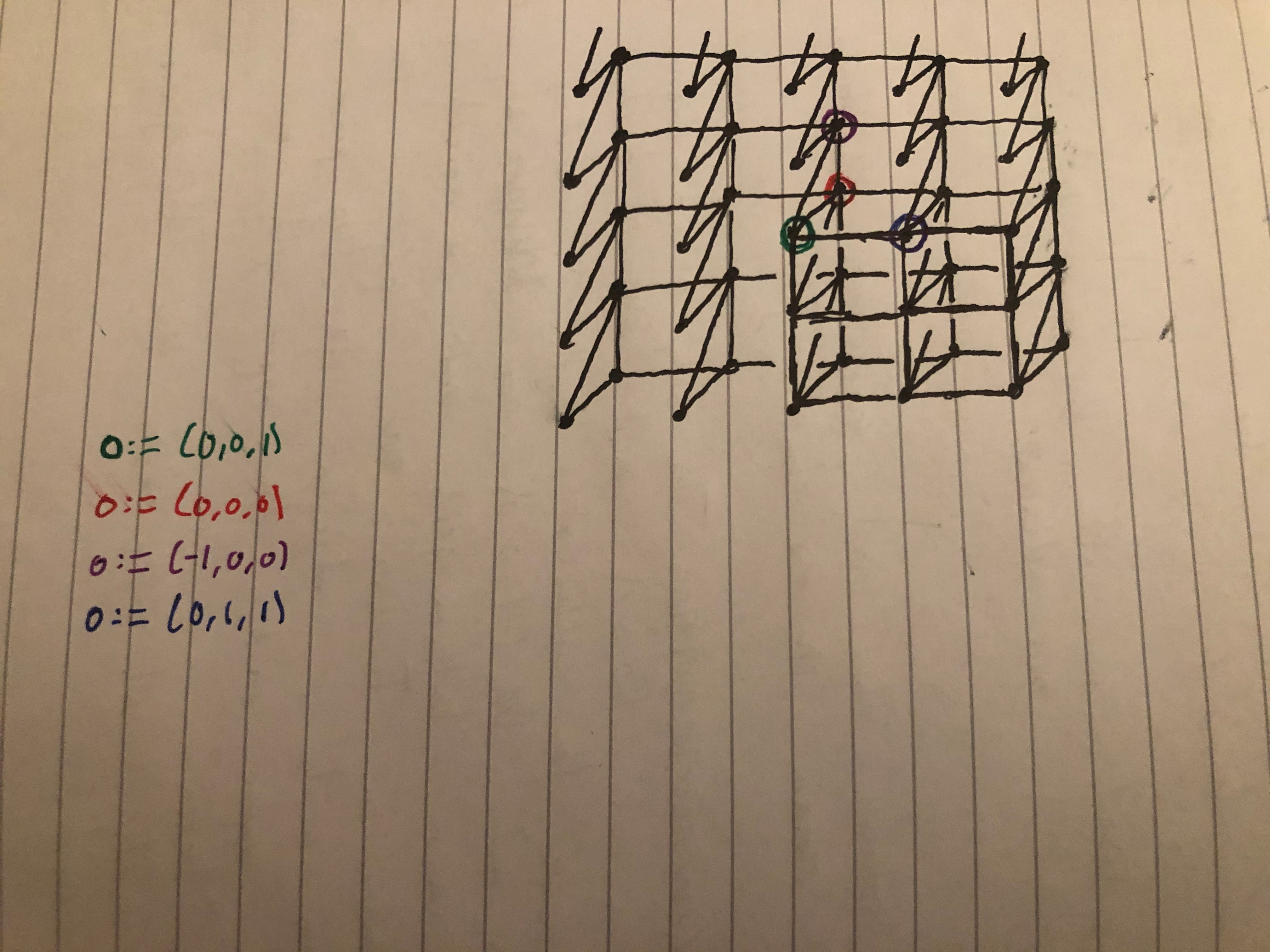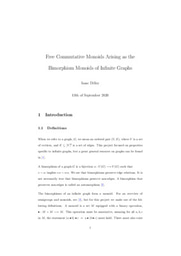The Beginning of a Friendship: My Introduction to TeX
When I began my research this summer, I truly had no idea what to expect. The idea of researching mathematics seemed so foreign, and I found it really challenging to set reasonable goals for myself. My project is in graph theory, which is an area of mathematics focused entirely around dots that may or may not have lines connecting them.
Representing problems and structures with graphs allows one to visualize problems, even quite complex ones. To me, this suggested my time was best spent bashing away at a whiteboard drawing graphs until I happened upon some sort of “breakthrough”, and for the first week, that’s roughly what I did. When I met with my supervisor for the first time, I was pleased to be able to present a drawing from my notebook of a graph I came up with by holding it up to my computer’s built-in camera.

This is the actual drawing I proudly presented in our first meeting.
It is now hanging on my parents' refrigerator.
When he saw what I’d come up with, he told me it was time for me to begin writing everything up using TeX. For those who are unfamiliar with TeX, it’s a free typesetting system used widely in academia to make documents look professional. I was aware of TeX, but I had never used it before. At the time, I was quite content doodling on my whiteboard, and the thought of having to learn what looked like a new language, just to present my work in an aesthetically pleasing way seemed daunting.
Luckily, I was in good hands, as the online TeX community is incredibly helpful, and my supervisor is certainly no slouch when it comes to mathematical formatting. As I began turning my shorthand chicken scratch “proofs” into legible mathematics, my supervisor introduced me to TikZ, a language for producing graphics, by turning my notebook drawing into a graph I couldn’t have dreamed of drawing freehand.

My graph generated by Dr. Coleman using TikZ
By this point, I was sold on TeX. It had a bit of a learning curve, but it didn't take long before I realized I was enjoying writing up my research; I actually began to find it quite relaxing. I realized quickly that thinking about a problem all day can be exhausting, and being able to write my thoughts up in TeX helped me to flesh out the ideas I’d come up, and have some tangible results at the end of the day. After a few days of practice, I was actually able to just zone out at my keyboard with some music on.
At this point, my summer of research is coming to a close, and through TeX, I actually have something to show for it. I want to thank my supervisor, Dr. Tom Coleman for making time to meet with me twice a week, and for his invaluable guidance, proofreading, and TeX expertise. I also want to thank the Laidlaw team for making this a fulfilling summer of research, even amidst such uncertain times. Finally, I want to thank Lord Laidlaw for his generosity in establishing and continuing to fund the Laidlaw Programme.


Please sign in
If you are a registered user on Laidlaw Scholars Network, please sign in